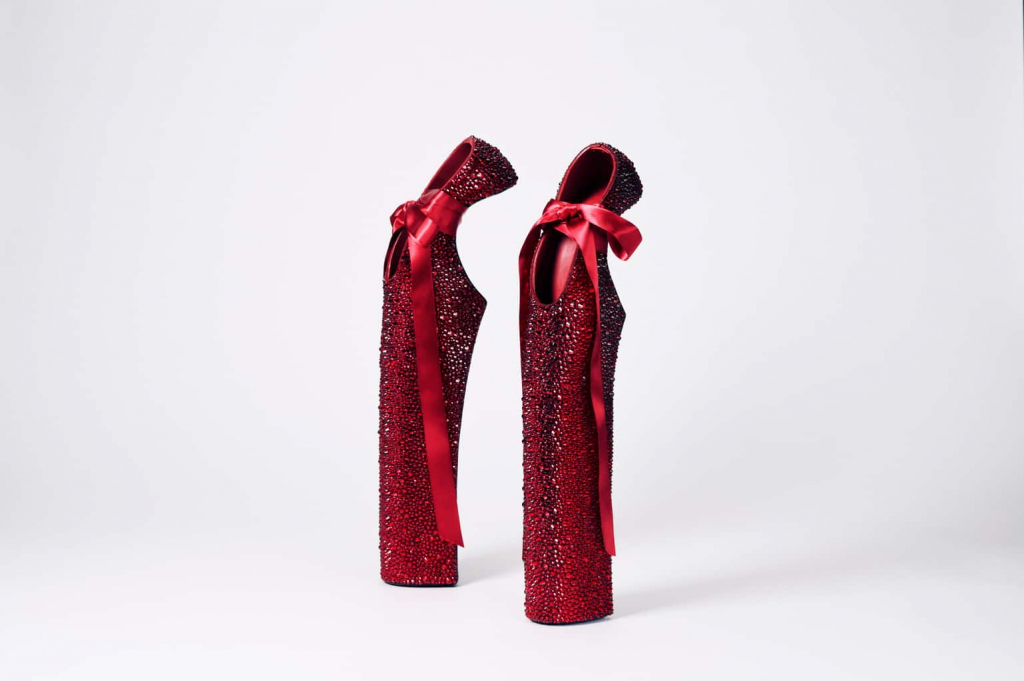Fashion is many things to many people. It can be liberating but also oppressive. Fashion is empowering and feminist but also discriminatory and sexist. All things considered, fashion is absurd and contradictory in philosophy but surreal as an art form; this is one of the few consistencies you can find throughout human history.
Fashion’s surrealist capabilities are the all-encompassing theme of The Tokyo Metropolitan Teien Art Museum’s current “Mode Surreal” exhibition. Inspired by the artistic movement led by French poet André Breton, the museum and curator Kyoko Jimbo assembled an inspired reexamination of fashion, in its broadest definition, from around the world and through the centuries, with a spotlight of trends that seem surreal to our 21st-century selves but exposes the truths of societies past.
“In a few words,” says Jimbo, “this exhibition is meant to showcase the fantastical elements of fashion.” She continues to explain that the experience this exhibition hopes to provide is to have visitors imagine times when wearing intricate clothing was a daily ritual and reflect on how history changed fashion into how we recognize it today.
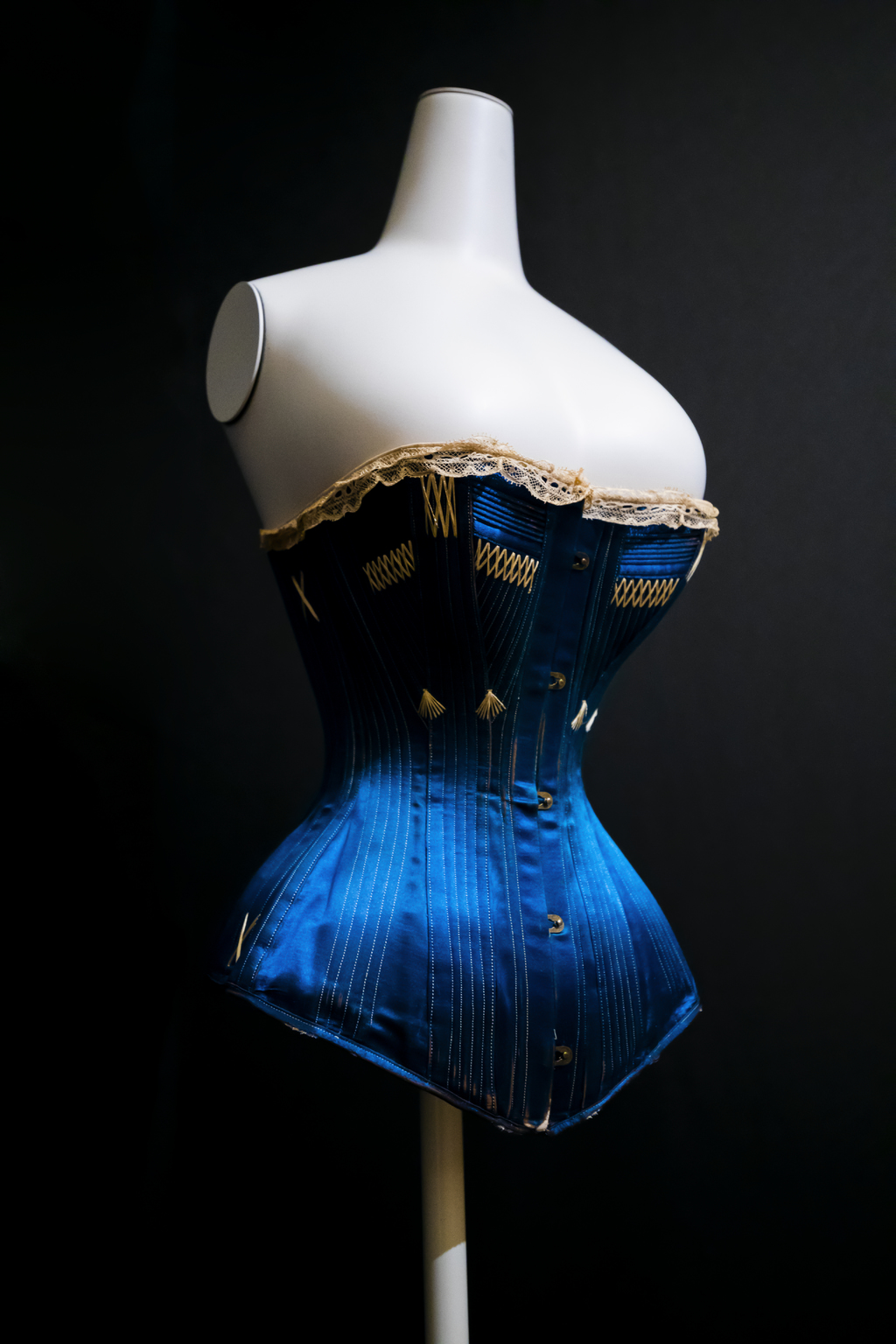
Blue corset | Photo by Rose Vittayaset
Spread across the museum’s main building and new annex, the exhibition displays a variety of fashion and fashion-related items, starting with artifacts from 18th- and 19th-century Europe and China.
The most notable piece in this first half of the exhibition is a blue satin corset decorated with gold embroidery from 19th-century England, a borrowed piece from the Kobe Fashion Museum. And nearby, a pair of shoes created for bound feet from early 20th-century China. Together, you can only think about women’s fashion, and how it often remains in an uneasy gray zone – is this expression or submission?
Up on the museum’s second floor, you’ll find more political statement pieces from modern designers, including two Dolce & Gabbana necklaces decorated with keys and bottle caps, and two Martin Margiela necklaces shaped like Baroque picture frames.
Surrealism is Now
Covid-19 has pushed the world into questioning everything: The five-day workweek, the necessity (or potentially lack-thereof) of offices and, by extension, office wear. While tech gurus in Silicon Valley can attend their board meetings in a t-shirt and jeans, in Japan a suit-and-tie getup is not something that was questioned by many until companies started hosting their morning huddles on Zoom.
Office attire is nowhere to be seen in “Mode Surreal” but it does make you think about the salaryman’s fitted suit and its symbolism but even more so its necessity.
Fashion designers, some of whom continuously explore the limits of fashion, naturally lead the industry. “Today’s fashion is all about freedom,” says Jimbo. “And that wouldn’t have been possible without surrealism.” Surrealism – and the designers who took on the challenge to transplant Breton’s philosophy into something wearable.
Spotlight on Japanese Artists
The main building is dedicated to global fashion history and its many surreal aspects. In contrast, the new annex is dedicated to contemporary takes on fashion by Japanese designers and artists. Time can only tell what will be considered absurd in our era, so there is no example of memorable trends but rather an outlook on fashion and how it is defined in 2022.
You’ll find a few paintings to get you started, all featuring some eccentric twist on fashion, culture and society, all with undoubtedly Salvador Dali inspirations. As you enter the first open space, your eyes are naturally drawn towards the shoes of the acclaimed creative Noritaka Tatehana.
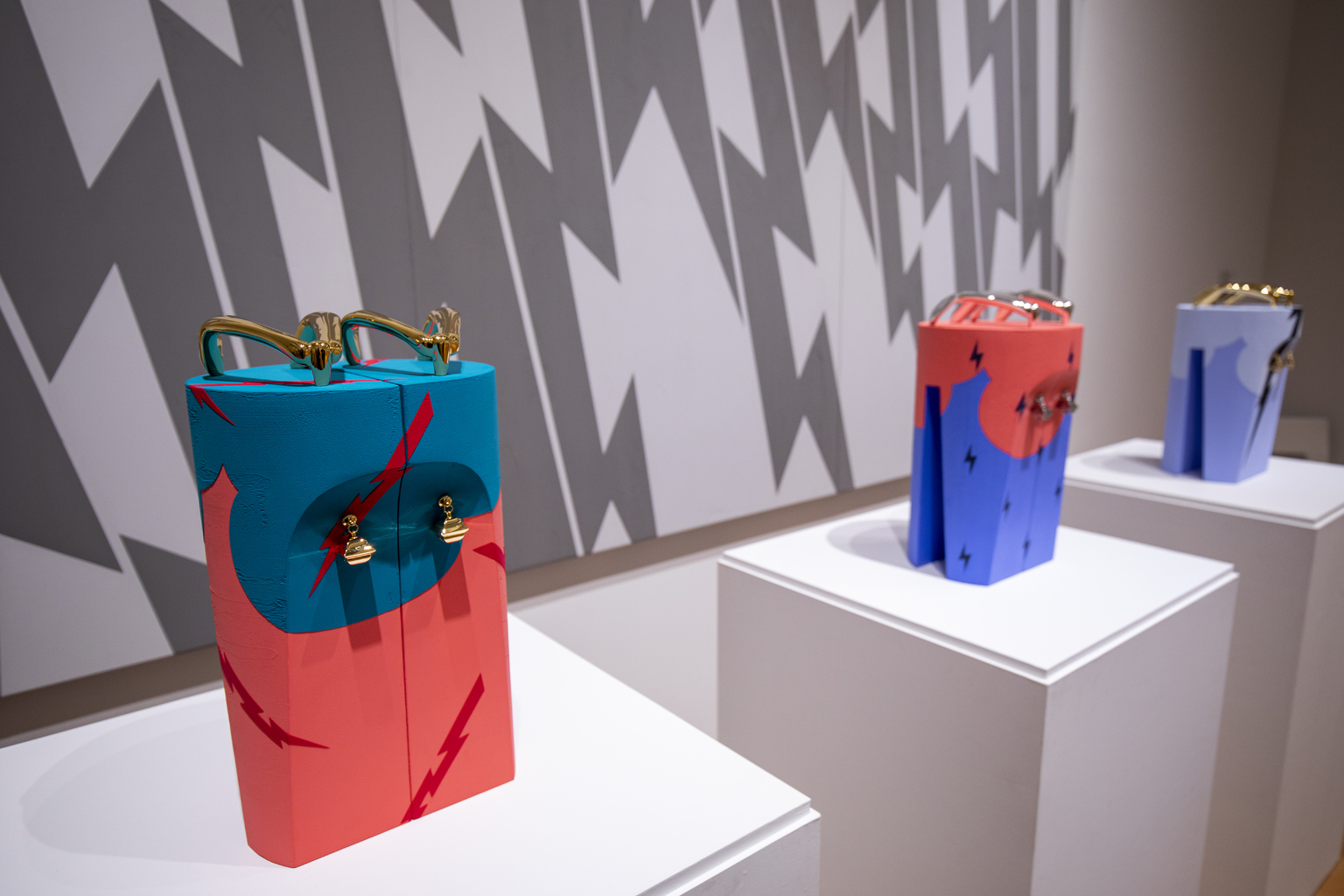
Noritaka Tatehana, Floating World Series (2019–2021) | Photo by Rose Vittayaset
Tatehana is not a fashion designer but an artist and Tokyo University of the Arts alumnus. His work is predominantly inspired by Japanese traditional and contemporary culture in the form of an obsession with oiran, a category of high-ranking courtesans and precursor to the more popular geisha. Tatehana is all about extravagance. He is best known for this series of heel-less shoes, inspired by Japanese takageta, which he often paints and decorates in vibrant colors or crystals. And if you’re thinking, “These shoes look like something Lady Gaga would wear,” it’s because she has. Tatehana has been working with Gaga as a shoemaker for years. Those 50cm-tall ballet shoes in the “Marry the Night” music video? That’s the work of Tatehana.
Turn left and you’ll be taken away from the glam of Tatehana and into the worlds of Yoichi Nagasawa and Masaya Kushino, whose works, though vastly different, complement each other seamlessly.
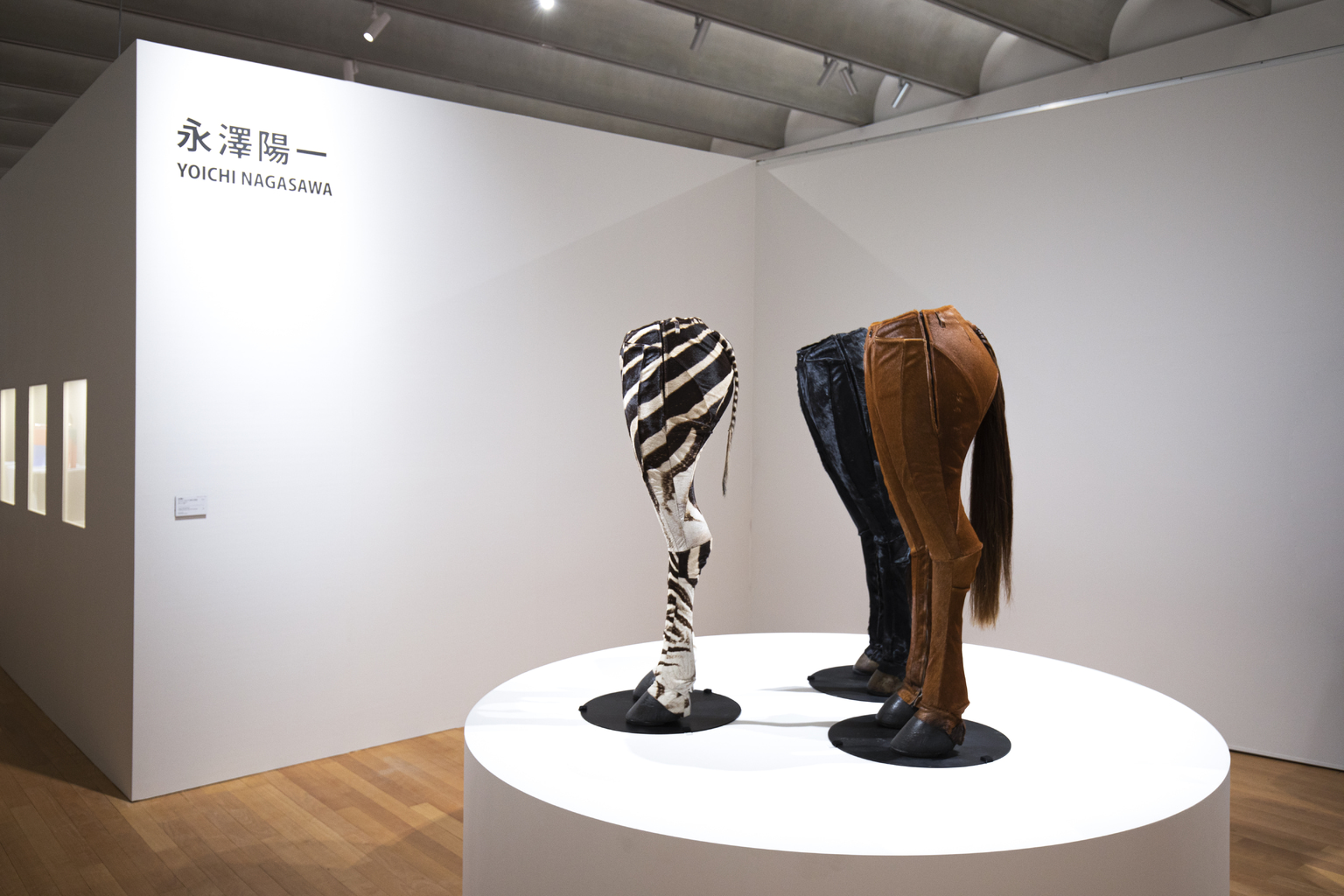
Yoichi Nagasawa, Jodhpurs pants (2008) | Photo by Rose Vittayaset
Director of Muji Fashion from 1992 to 2002 and honorary professor at the Kanazawa College of Art; these are only two of the many accomplishments of Nagasawa. The fashion designer spent his post-grad life surrounded by fashion, mainly working in and from Paris. Working with Japanese and global brands, Nagasawa always favored practical, consumable clothing, with more than a few uniform designs under his stylish belt. Some of his clients include Japan Asia Airline and Tokyo Metro.
While one certainly could have put together an entire exhibition detailing Nagasawa’s influence on fashion in Japan, “Mode Surreal” decides to go bold. Borrowed from a 2008 exhibition in Kyoto, are a set of three pants worn over what seems like the back legs of stallions. Each piece mimics the pattern of a member of the Equidae family. The setup is shocking, a full 180 coming from Tatehana’s heelless shoes, and you are left wondering where the body and the head of the horse could be.
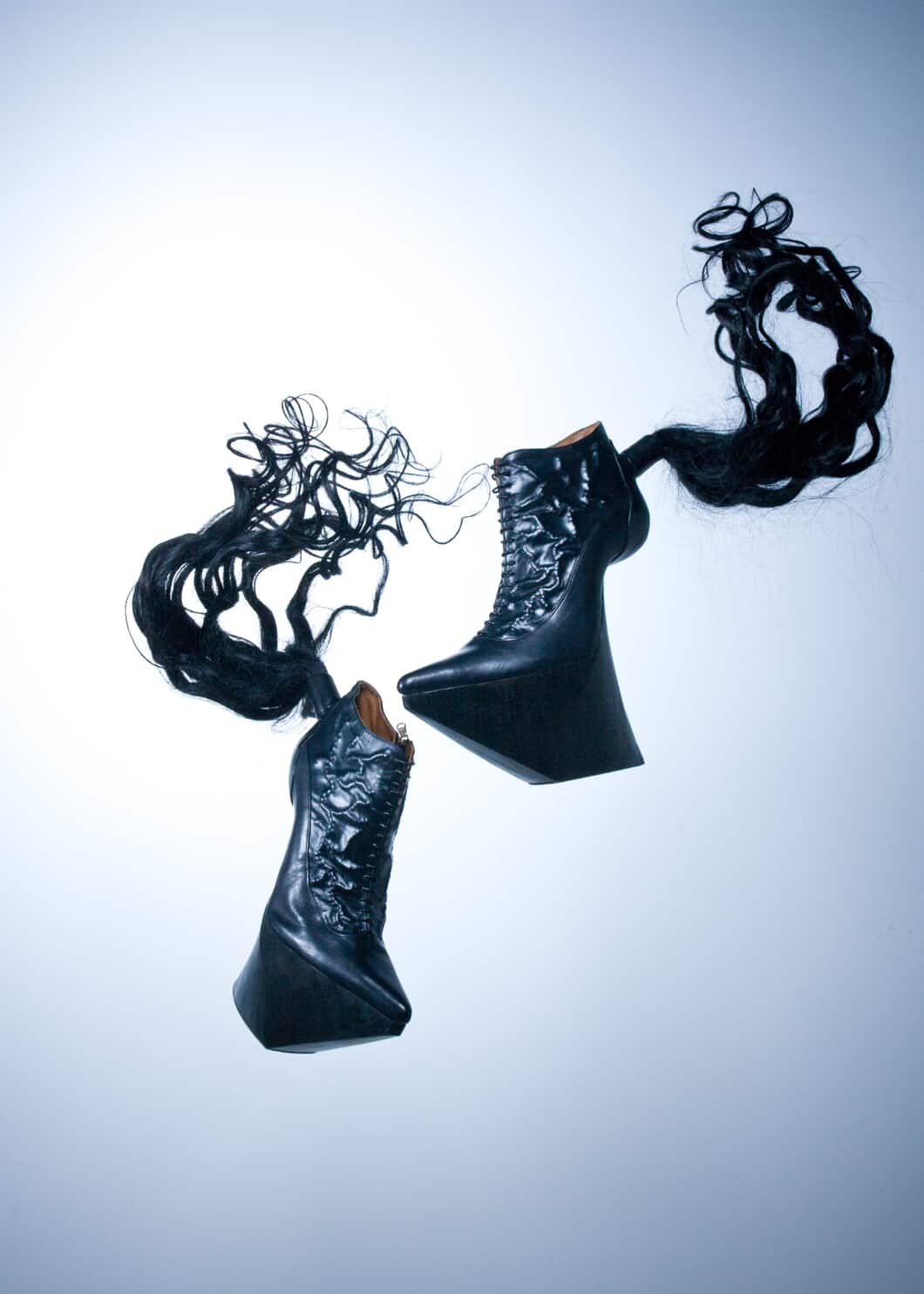
Masaya Kushino, LUNG-TSHUP-TA (2009) | Courtesy of the Tokyo Metropolitan Teien Art Museum
To the very back of the room and adhering to the animal theme is a true marriage of fashion and art in the shape of a lineup of Kushino’s fantastical and beastly footwear. Taking the already theatrical platform heel-less shoes, Kushino creates and enfolds the basic skeleton with sculptor and custom designer-worthy creations part of his “Bird-witched” series. From open wings on the side of platform shoes to heels carved in the shape of a rooster’s feet, Kushino’s works truly blur the lines between costume and eerie works of art.
Exhibited next to one another, a clear and unified theme comes to mind: Fashion and its consequences. From leather to feather, fashion comes at a price, be it the abuse and killing of animals or the use of water. Back in the fall of 2021, American singer Billie Eilish made the headlines when she showed up to the Met Gala in an Oscar de la Renta ball gown only on the condition the brand would stop using fur. Materials and where they are sourced is becoming not only a concern for celebrities, who of course have the luxury of ample choice, but also to the average Joe.
Consumers are investing more time in learning what materials go into their clothes, and reflecting on what their clothes can mean to them. “Mode Surreal” offers not only a history lesson on fashion — more specifically women’s fashion — but also food for thought, whether you consider yourself a fashionista or not.
Mode Surreal runs until April 10. See the museum’s official website for more information.
Top and feature image: Noritaka Tatehana, Heel-less Shoes / Lady Pointe (2014). Courtesy of the Tokyo Metropolitan Teien Art Museum.

